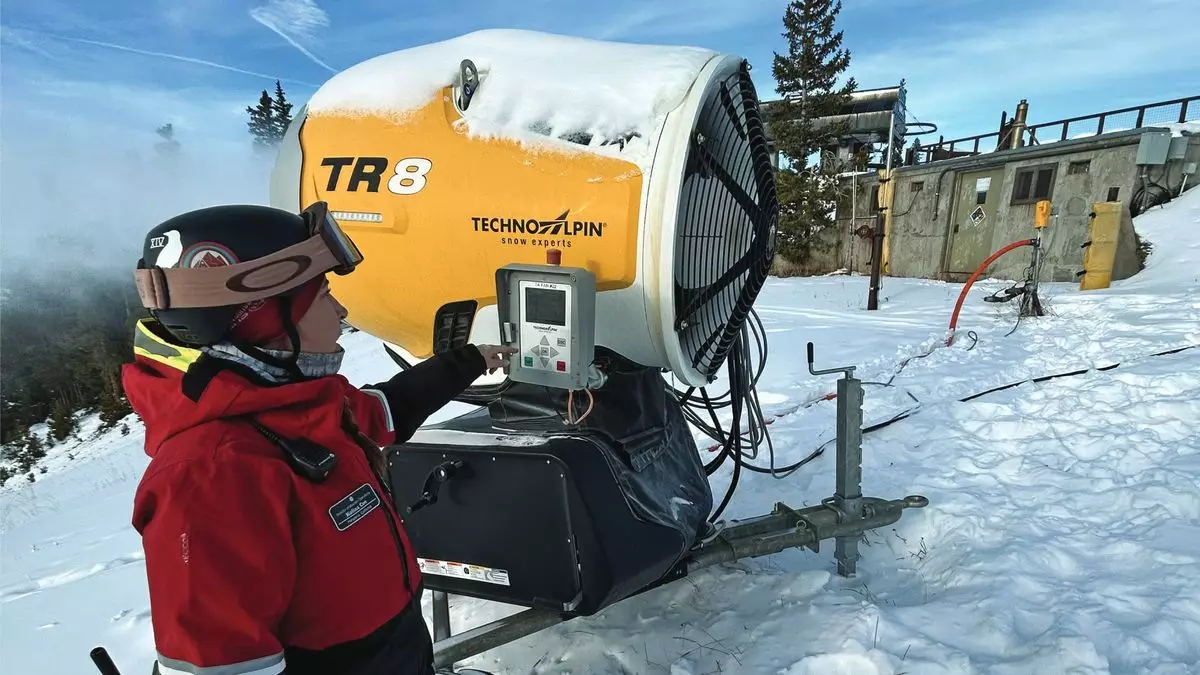The essence of winter sports relies heavily on one crucial element: snow. In the beautiful expanse of Keystone Resort, Colorado, an evolving landscape of technology and tradition showcases how the ski industry navigates the challenges posed by climate unpredictability. As we approach the bustling ski season, it’s worth taking a closer look at the innovations transforming snowmaking operations and their implications for both resorts and ski enthusiasts.
Standing at an impressive 11,640 feet on Dercum Mountain, observations of snowmaking lend insight into the sophisticated ballet of water, air, and technology at play. Friday, just before Thanksgiving, witnessed the unveiling of this year’s operations, as diverse machines worked in harmony, ensuring the slopes were ready to welcome eager skiers. Central to this process is the innovative technology of snowmaking guns. For instance, the Italian-manufactured mobile fan gun deployed on the Mozart slope effectively demonstrates how modern machinery can harness varying weather conditions to produce artificial snow.
Despite the brisk 32.9 degrees Fahrenheit, the critical component for snowmaking lies in humidity levels. The unusually low moisture content—at a mere 14%—dramatically lowers the operational threshold for effective snow production, allowing water droplets to transform into snowflakes with remarkable efficiency. This dynamic is particularly crucial for resorts like Keystone that are keen to optimize early-season openings and extend the longevity of their ski offerings.
Executive management at Keystone clearly demonstrates their passion for snowmaking, as shown by Kate Schifani’s enthusiasm. With a staggering 672 fixed and mobile snowmaking units covering approximately 40% of Keystone’s skiable terrain, the resort is equipped to efficiently create an operational base of snow even amidst fluctuating climate conditions. Since 2019, significant advancements—such as the introduction of 53 modern machines and revisions to water piping—have allowed Keystone to push its average opening date from November 8 to October 27, making it a premier destination for early ski adventures.
Additionally, innovations aren’t limited to just equipment upgrades. Vail Resorts, the operating entity for Keystone, is setting benchmarks for sustainability in the industry. Their commitment to achieving operations powered by 100% renewable energy over 37 resorts in North America is commendable. However, it’s the forward-thinking strategies regarding climate resilience that truly set them apart. With ambitions to reach net-zero emissions by 2030, it’s a tremendous leap towards sustainability that resonates through the fabric of the skiing community.
One of the key advancements revolutionizing snowmaking operations is automation. By utilizing technology, Keystone can respond swiftly to changing weather patterns, significantly enhancing operational efficiency. A recent visit to the midmountain operations center revealed an automated dashboard monitored by Nick Daly, indicating the snowmaking status across various locations. The smart systems provide real-time feedback, allowing the resort to jump on optimal snowmaking conditions without delay. This automation not only streamlines the snow production process but also minimizes resource consumption by reducing the need for on-site staff labor.
The benefits of automation extend beyond mere convenience. Efficient snowmaking translates into more reliable snow quality, optimizing both water and energy usage. Although Keystone has yet to disclose specific efficiency gains, Vail Mountain’s project outlining an 85% gain from the deployment of automated systems paints a promising picture for efficiencies to come.
As ski resorts across the globe face an uphill battle against the consequences of climate change, Keystone’s commitment to robust snowmaking operations positions it well for future challenges. The reliability of early openings is vital not just for guest satisfaction but also for maintaining the vitality of the ski industry overall. Guests’ trust in consistent conditions draws them back to the slopes, which ultimately supports economic growth in the surrounding communities.
The combination of automation, responsible energy use, and innovative technology allows Keystone Resort to lead the charge in creating a sustainable future for winter sports. As continued advancements unfold, skiers can expect not only an exhilarating experience on the slopes but also a broader commitment to conservation and responsible tourism that reflects the needs of our world today. This is a win-win scenario, providing thrill-seekers with what they seek while ensuring that the mountain maintains its splendor for generations to come.


Leave a Reply